The Midrash
The Midrash: An Introduction
JACOB NEUSNER

A JASON ARONSON BOOK
ROWMAN & LITTLEFIELD PUBLISHERS, INC.
Published in the United States of America
by Rowman & Littlefield Publishers, Inc.
A wholly owned subsidiary of The Rowman & Littlefield Publishing Group, Inc.
4501 Forbes Boulevard, Suite 200, Lanham, Maryland 20706
www.rowmanlittlefield.com
PO Box 317
Oxford
OX2 9RU, UK
Copyright 1990 by Jacob Neusner
First Jason Aronson softcover edition 1994
First Rowman & Littlefield edition 2004
All rights reserved. No part of this publication may be reproduced, stored in a retrieval system, or transmitted in any form or by any means, electronic, mechanical, photocopying, recording, or otherwise, without the prior permission of the publisher.
British Library Cataloguing in Publication Information Available
Library of Congress Cataloging-in-Publication Data
Neusner, Jasob, 1932
The Midrash : an introduction / by Jacob Neusner.
p. cm.
Includes bibliographical references.
ISBN 978-1-56821-357-6
1. Halakhic MidrashimIntroductions. 2. Midrash rabbah. GenesisIntroductions. 3. Midrash rabbah. RuthIntroductions. 4. Midrash rabbah. Song of SolomonIntroductions. I. Title.
BM514.N482 1990
Printed in the United States of America
 The paper used in this publication meets the minimum requirements of American National Standard for Information SciencesPermanence of Paper for Printed Library Materials, ANSI/NISO Z39.48-1992.
The paper used in this publication meets the minimum requirements of American National Standard for Information SciencesPermanence of Paper for Printed Library Materials, ANSI/NISO Z39.48-1992.
For
tienne and Ann Trocm
Strasbourg, France
A token of thanks
to dear and cherished friends and colleagues
for hospitality beyond all imagining
on a splendid day in Paris
February 13, 1990

Contents

PART I
THE SECOND- AND THIRD-CENTURY COMPILATIONS
The Tannaite Midrashim
PART II
THE FOURTH- AND FIFTH-CENTURY COMPILATIONS
The Earlier Rabbah Midrashim
PART III
THE SIXTH- AND SEVENTH-CENTURY COMPILATIONS
The Later Rabbah Midrashim
by Jacob Neusner

Preface

When people refer to the Midrash, they generally refer to a collection of interpretations of a scriptural passage. So the Midrash says means, this is what the Torah means in this particular verse. The word Midrash, which uses the root DaRaSH and hence means search in Hebrew, speaks of the same thing that the word interpretation or exegesis does in English. Midrash also stands for a compilation of such interpretations, as in the title of a collection of such documents called Midrash Rabbah, which covers Midrash-compilations for the Pentateuch and the Five Scrolls (Ruth, Esther, Lamentations, Song of Songs, Kohelet/Ecclesiastes), biblical books read in the synagogue liturgy. And, finally, Midrash may speak of the particular approach to interpretation, or exegesis, taken by Judaic sages.
All of these equally valid meanings attached to the word Midrash treat the various interpretations by sages of Judaism as pretty much uniform in time and place of origin; all of the documents as interchangeable in their approach and message; all of the specific interpretations of verses as essentially saying the same thing, only about a different verse or subject; hence, the Midrash says. Along these lines, people may say, its a Midrash, to imply, its a fanciful meaning imputed to a simple verse, or to just refer to a story (for which, in Hebrew, the word is aggadah). Given the variety of meanings imputed to the word Midrash, a whole range of questions may arise. In this book, I promise to accomplish only one of many valid tasks in introducing the Midrash. It is to set forth the Midrash-compilations that reached closure and conclusion in the formative age of Judaism, that is, the first seven centuries of the Common Era, the time in which the Mishnah (c. 200), Talmud of the Land of Israel (c. 400), and Talmud of Babylonia (c. 600) were written. I have translated (or retranslated) all of these compilations of Midrash-exegeses of Scripture. In these pages I mean to make it possible for readers to recognize one such compilation from another and so to begin studying on their own.
The bibliography covers my translations and studies of the Midrash. It includes other introductions I have written to these same writings, each serving its own purpose of exposition on a given thesis and problem, none repeating the others in any material way. Introductions, of course, may accomplish diverse purposes for various readerships; I intend this introduction to serve as the first step in the approach to one of the most important kinds of holy books of Judaism. When readers have completed the account of each document and sizable sample offered here, they should be able to explore on their own the writings of our sages of blessed memory, who taught us how to read the Hebrew Scriptures as the written part of the Torah.
For the sages wrote with Scripture, by which I mean that the received Scriptures formed an instrumentality for the expression of a writing bearing its own integrity and cogency, appealing to its own conventions of intelligibility, and, above all, making its own points. Any notion that the authorships (those who collected and compiled the materials now formed into a document), of Judaism proposed a systematic exegesis of Scripture conducted in terms of the original or historical program of Scripture, or appealed to Scripture for validation or vindication of doctrine or practice perceived as independent of Scripture, distorts the character of the discourse of Judaism. Scripture formed part of the Torah. The authorships of Judaism, particularly in late antiquity, also participated in the discourse and statement of the Torah. They did not write about Scripture, they wrote with Scripture, for Scripture supplied the syntax and grammar of their thought, hence, writing with Scripture.
In this context, we understand, Scripture served as testimony and testament. It accomplished important purposes in the formation and expression of a larger, wholly cogent statement. But it constituted a subordinated and merely instrumental entity; not the court of last appeal and final judgment, not the ultimate source of truth and validation, exceptof courseafter the fact. The fact found expression in the figure of the sage, in the model of Moses, our rabbi. People commonly suppose that when Judaic or Christian authorships turned to Israelite Scripture, it was in search of proof-texts. The relationship was exegetical (getting meaning out of the text) or eisegetical (reading meaning into the text). But when our sages of blessed memory proposed to compose their statements, and while they, of course, appealed to Scripture, it was an appeal to serve a purpose defined not by Scripture but by a faith under construction and subject to articulation. Scripture formed a dictionary, providing a vast range of permissible usages of intelligible words. Scripture did not dictate the sentences that would be composed through the words found in that (limited) dictionary. Much as painters paint with a palette of colors, authorships wrote with Scripture. The paint is not the picture. In terms of this book, the Midrash is a vast painting, begun in the age in which the Judaism of the dual Torah took shape, continued from then to now. But the painting is made up of a large number of completed paintings, a collage of perfect compositions. In these pages we examine the earliest parts of the vast composite, the Midrash.
Next page

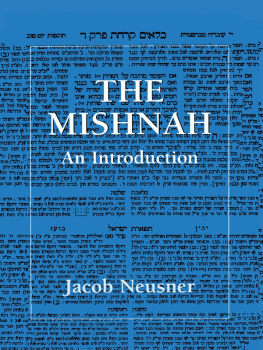
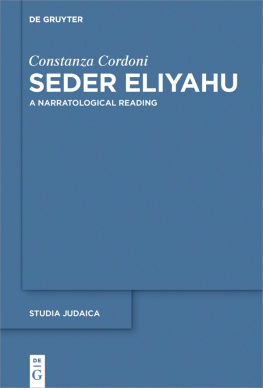
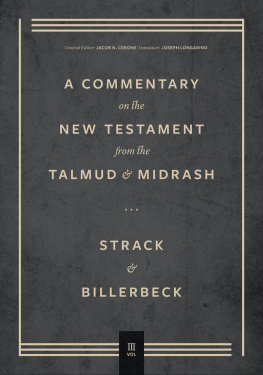
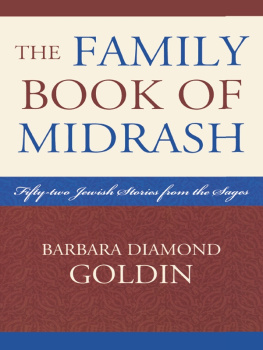

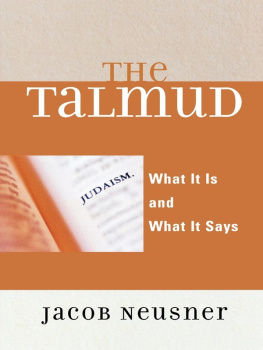

 The paper used in this publication meets the minimum requirements of American National Standard for Information SciencesPermanence of Paper for Printed Library Materials, ANSI/NISO Z39.48-1992.
The paper used in this publication meets the minimum requirements of American National Standard for Information SciencesPermanence of Paper for Printed Library Materials, ANSI/NISO Z39.48-1992.